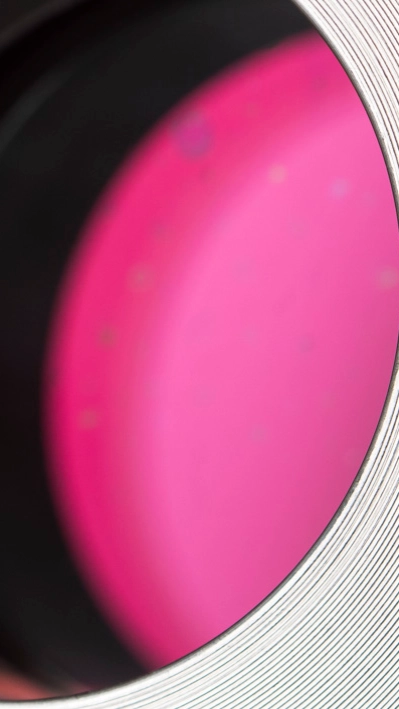Advantages compared to classical measuring technology:
- faster, as no separate gas extraction
- more reliable, as inline in the process
- insensitive to other gases
- lower operating costs

Technical Services
Isolation Flanges
Secure Connection of Laser Spectroscopy to Chemical Processes
BASF's process analytics technology uses laser spectroscopy to selectively measure gases directly at the chemical process. These measurements allow for accurate determination of substance concentrations in safety-instrumented loops (safety integrity level, SIL).
To connect laser spectrometers to a chemical process, laser manufacturers typically require suitable hardware. As a plant operator with years of experience and specialized knowledge, BASF has developed isolation flanges to enable the use of laser spectrometry in their production plants. Initially designed for measuring oxygen, this combination of isolation flange and laser spectrometer has become the industry standard for oxygen measurements.
A isolation flange creates a non-invasive optical interface for processes using a specialized glass. The design of the flange meets the process engineering requirements for pressure and temperature in accordance with the EU Pressure Equipment Directive.
In response to the global trend towards hydrogen as a sustainable energy carrier, a new isolation flange was specifically developed for the requirements of hydrogen laser spectroscopy as part of a development project. This specialized hydrogen isolation flange enables direct connection to chemical processes and offers the opportunity for inline measurement of hydrogen using laser spectroscopy in the chemical industry. Previously, the sample gas was extracted from the process using a pump and its hydrogen concentration was determined using a thermal conductivity device. With the development of this special hydrogen isolation flange, precise measurement of hydrogen content can now be achieved directly within the process.
Isolation flanges fall under the category of pressure equipment components as defined by the Pressure Equipment Directive. The isolation flanges are designed and tested according to AD 2000 (part of the Pressure Equipment Directive).
Standard material is stainless steel, special materials are possible on request.
| Norm | DIN EN 1092-1 | DIN EN 1759-1 | |||||
|
Window optimized for measurement of |
Standard | Oxygen | Water | Hydrogen | Standard | Water | Hydrogen |
| BASF Material No. | 8230069 | 8229519 | 8230021 | 7287805 | 8229985 | 8279500 | 7340270 |
| Permissible operating overpressure | PS 18 bar | PS 150 lbs (10:3 bar) | |||||
|
Permissible operating temperature |
TS 200°C | TS 392°F (200°C) | |||||
| Prozessanschluss | DN 50 / PN 10 -PN 40 | 2" – Class 150 | |||||
BASF has been using several hundred isolation flanges in its chemical plants worldwide for decades. Furthermore, BASF isolation flanges are also successfully used in other large-scale chemical and petrochemical plants. Currently, hydrogen lasers are already being used in several projects, and the first hydrogen isolation flanges have already been delivered to external customers.


